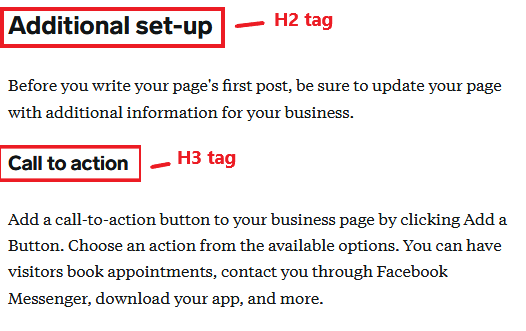When writing a blog or any piece of content, you should not forget about header tags. Actually, not forgetting is an understatement. It should be one of your priorities, one of your top focus, as header tags, especially h1 tags, are as essential as the body of words that come after them.
Why though? Header tags are just there to act as a title for each topic. What makes them important? Simple analysis of how content and SEO affects each other should give you the answer: it’s because search engines use header tags to find your content. Without header tags, your content will be unseen thus making it useless. To help avoid this, read more about header tags below.
Purpose of header tags
Header tags are more than cosmetics. It won’t only make your content look organized, it’ll also put your material out there for the world to see since search engine sites like Google employ their bots to look for content with proper header tags and place them on search results pages.
But what are they, really?
Header tags are a hierarchy: it has H1 tags, H2 tags, and H3 tags and stretches to at least H6 tags. One major difference between H1 and H2 and the rest are the size of their fonts. The bigger the font, the higher and the more important the header tag is in the hierarchy, hence, H1 tags have the largest font size.
H1 tags are the top headers and usually the title grabs your attention the moment you open a website. Here is an example of an H1 tag:

H2 up to h6 tags are optional headers and aside from SEO engagement, they provide user-friendliness to your site by making things easier to follow. They can be less of a requirement than h1 tags but it’s not bad to include them in your content as they also help rope in visitors. Below are images that show what other header tags look like:

As principal elements of HTML (Hypertext Markup Language), header tags are coded as <h> and makes up the most evident SEO elements of your website. Contrary to what you might think, h1 tags should not necessarily be on the top of the page. However, it works best for User Experience if they are indeed the first header a visitor will see.
Difference of H1 tags and title tags
It can be tricky to differentiate a title and an H1 tag since they both show your title. Their difference lies on how they are presented and how they function. Title tags can also be referred to as meta tags and are typically only seen on search results pages and at the browser tab whenever your website is opened. H1 tags, on the other hand, are the titles that are on the body of the content itself and do not appear on search results.
Tips for effective header tags
Use only one h1 tag per page. Having more than one will leave search engine trackers confused which might also cost you your place at the top search result page. Having a single H1 tag also helps to make things look uniformed in your actual website.

Of course, you need to include keywords in your h1 tags which also should explain the gist of your content. At least 50 to 70 characters should be enough length.
For the rest of the header tags, ensure that you use them properly. You cannot put an h3 tag ahead of an h2 tag. This can be easily noticed as what we’ve established earlier, header tags have distinct font sizes. Also, avoid putting too much of them in your content. The aim of other header tags is too divide your written content and having too much division can make things feel a little stunted. Likewise, beware of going further than an h3. Limit your header tags to make the content solid and less pretentious.
Having said that, make your header tags unique! Make them stand out! And you can do this by taking time to explore your keywords and sitting back to brainstorm.
With all of these matters at hand, we can say that SEO and content does go together. Without one, the other will be crippled. Make the most out of your header tags for your digital marketing! It really is not much, just a few mindful tinkering and you will be on your way to SEO goodness! You can find more of these simple solutions in some of our published blogs.